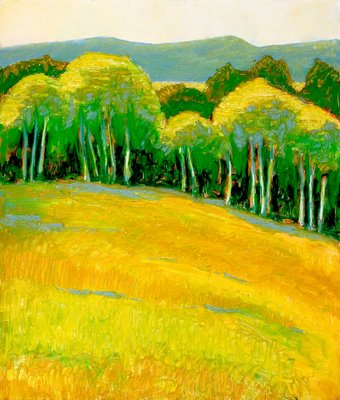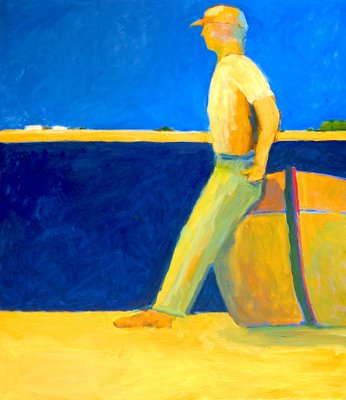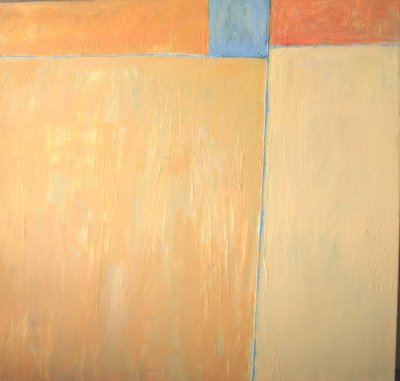"The real voyage of discovery consists, not in seeking new landscapes, but in having new eyes"
Marcel ProustAfter careers in medicine and computer science I took up painting in 1996 and went back to college as a full time student in studio art for five years. There I learned to paint and to see the world about me in new ways. I found that one can learn to draw - persistence is the clue. Teachers and students directed me to painters unknown to me. Often I could not make much of their work and yet in time they frequently became favorites - Milton Avery, Richard Diebenkorn, and Joan Mitchell come to mind among many others.
You can tell from my work that I am drawn to color and large shapes with little patience for detail. I find it interesting how one develops preferences that direct one's work without much awareness and how they eventually become a recognizable style. While some artists have a vision of their completed work before they start I seem to have to discover where I am going by just seeing what has to happen next. With my plein air paintings I almost always do a thumbnail value study however. I am fond of Chuck Close's comment, "amateurs look for inspiration, the rest of us just get up and go to work". Phillip Roth seems to have liked the quote also - I found it in two of his novels.
In summer I paint out of doors in Oregon, often with my friends, Helen Kroger, Susan Monti and Susan Dale when we share a wonderful lunch and critique. We show together each fall in Portland. In winter I paint in my studio in San Miguel de Allende, Mexico where most of my large abstract works are done.
I am pleased to be able to thank here the excellent teachers I have had at PCC, PNCA and PSU and especially Mark Andres at PCC from whom I took something like fifteen classes. Mark is special, an absolutely superb teacher and excellent artist. I also want to especially thank Sandy Roumagoux for her unending enthusiasm, support, joyous teaching and delightful art and Bob Dozano for his support even though I could never master water color and for showing up at our show each year.
I hope you will make comments. Click on the comment link to bottom right of any painting discussion to comment on the work or my notes or to see the comments of others. To make comments on the website as a whole click on the comment icon below at the bottom on this page.
To see more of my work:
March Archive of 31 more paintings
April Archive of 35 more paintings
Most of these paintings can also be seen at the sites below although there will be considerable redundancy at those sites.
McCartor Paintings (50 paintings sorted as landscapes, abstracts, figures - including some of those shown above)
McCartor Retrospective (90 paintings sorted by year painted)
I am grateful to Rusty Whitney for his care and expertise in photographing my 2003 and 2004 work. (WhitneyEventPhoto.com)
Hal McCartor
June 2006
6506 SW Barnes Road, Portland, OR 97225
 This-28x24-(2004) painting looking South from Cascade Head on the Oregon Coast was painted using oil sticks. It was painted on a wooden panel which allowed me to push on the oil sticks to go through the previous layer. This gave the interesting textural effects. Clicking twice on the painting will allow you to see more or the texture. (artist's collection)
This-28x24-(2004) painting looking South from Cascade Head on the Oregon Coast was painted using oil sticks. It was painted on a wooden panel which allowed me to push on the oil sticks to go through the previous layer. This gave the interesting textural effects. Clicking twice on the painting will allow you to see more or the texture. (artist's collection)


























